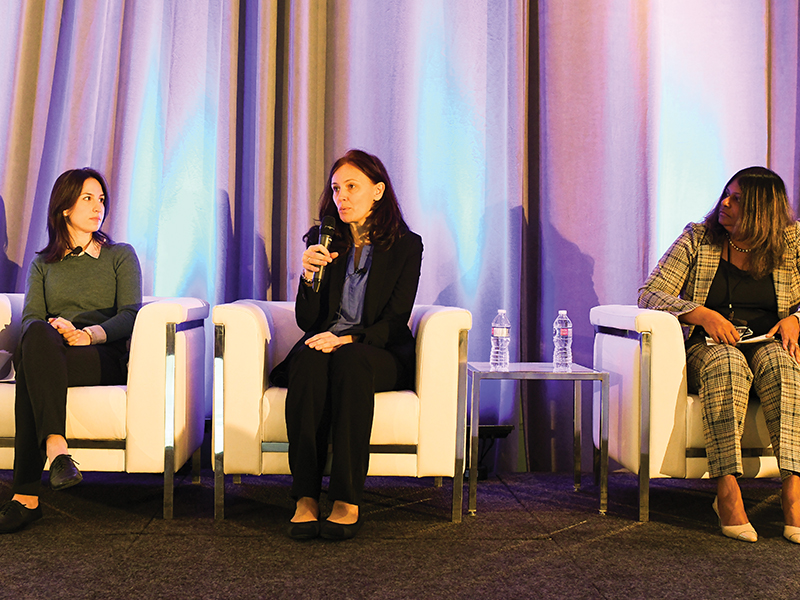

As employers increasingly see four generations represented in their workforces and a diverse range of employee needs, customization and flexibility in benefits and wellness plans are becoming key to creating healthy outcomes for all employees.
The result of these offerings was “peace of mind for employees and their families and a sense of belonging in an organization,” said Merlyn Sequeira (right), director of total rewards, payroll, recognition, wellness and human resources systems at Samsung Electronics Canada, during a panel session at Benefits Canada‘s 2022 Healthy Outcomes Conference.
When Sequeira joined Samsung, it had a traditional, one-size-fits-all benefits plan, though employees were expressing a desire for greater choice. This year, Samsung moved to a fully employer-paid flex plan, which provides employees with a certain dollar amount to allocate to the benefits that are most valuable to them. “We have four generations in the workplace and every employee has separate needs,” she said.
Read: Samsung snags award for health, wellness program for all life stages
Also speaking on the panel, Elena Shiganova (centre), senior manager of total rewards at the City of Mississauga, said the City was aiming to foster an outcome of “engaged employees who trust their leaders” through its benefits and wellness offerings.
The City of Mississauga has 11 different plans for its various employee groups, including the fire department, library, city works, its non-union population and part-time employees. In addition, all employees are able to allocate the same amount of money towards either a health-care spending or wellness account.
Laura Glenn (left), wellness program manager for North America at Ericsson, said the company’s wellness program has evolved from an initial focus on physical health to one on all aspects of health, including mental, social and financial. The company’s wellness program includes an app that allows employees to track their steps, nutrition, sleep habits and maintain a healthy blood pressure. It also includes virtual health-care and mental-health supports. It also has stations in its offices where employees can check their weight and blood pressure and has onsite biometric screening every year.
All three panelists stressed the importance of using data and employee feedback to measure whether their programs were achieving the desired results for plan members. Shiganova said the City looks at employee surveys and plan usage data. Its flexible dollars for a HCSA or wellness account was the “best thing” it had done, she said, because seeing which benefits employees have elected to spend money on has given the City a better sense of employee needs.
Read: How employers are maximizing health-care spending and wellness accounts
Samsung relies on a combination of select one-on-one interviews with employees, exit interviews, usage data and market information, said Sequeira, while Glenn noted Ericsson’s well-being program has provided the company with high-level, anonymized data on employee health markers, including cholesterol, triglycerides, blood glucose and body mass index scores.
“We use that data in a cohort analysis every two years to see how wellness program participants are progressing compared to non-participants and . . . wellness program participants do show better health statistics over time,” she said.
While the panellists felt they were seeing positive results from their efforts, they said there’s still work to do for specific employee groups. Ericsson is currently considering introducing a subsidy for caregiving expenses to support employees taking care of children or aging parents and the City of Mississauga is currently working to determine whether its benefits adequately support women going through menopause, given 20 per cent of its employees are women over age 40.
Read more coverage of the 2022 Healthy Outcomes Conference.
